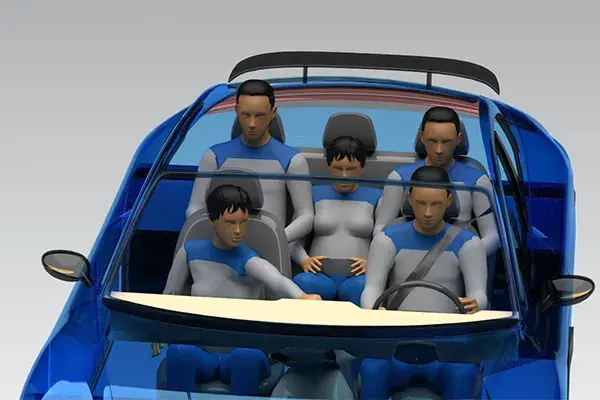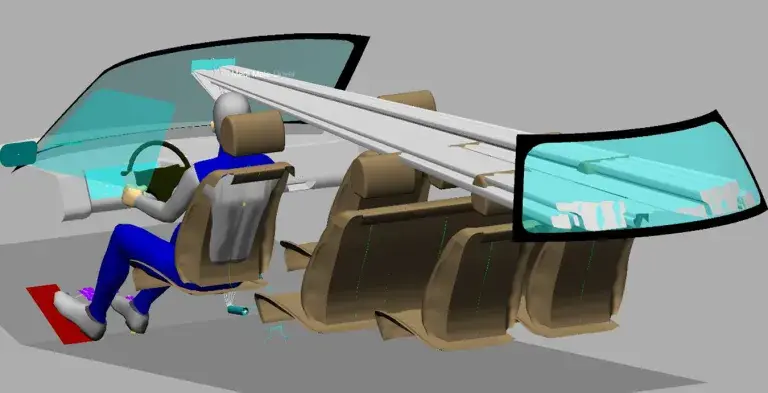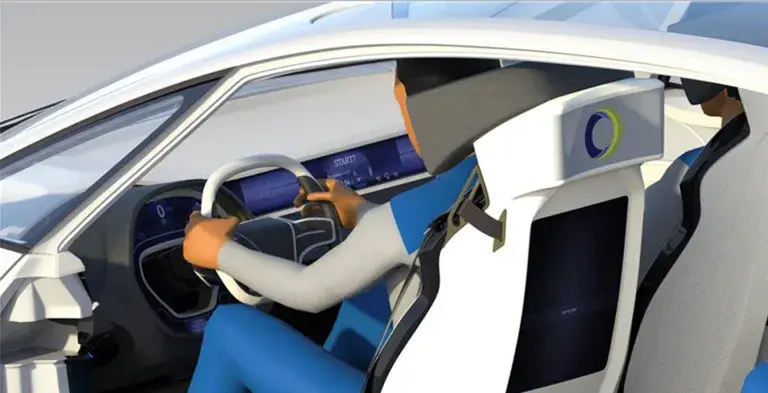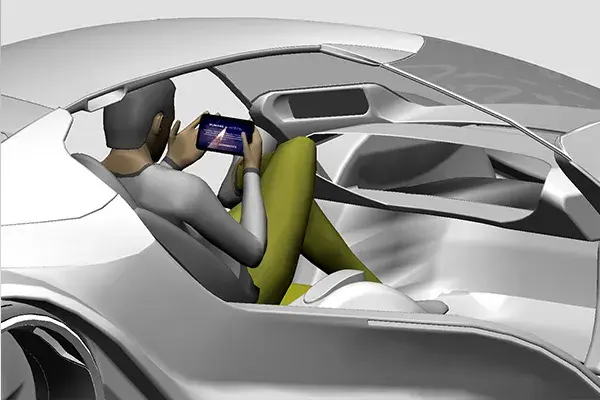As the automotive industry continues to evolve, one truth remains constant: vehicles must serve the people who use them.
As the automotive industry continues to evolve, one truth remains constant: vehicles must serve the people who use them. But who are those people? From tall teens in North America to elderly drivers in Asia, today’s mobility landscape is as diverse as it has ever been. Unfortunately, much of vehicle interior design is still rooted in outdated, one-size-fits-all assumptions that ignore key differences in gender, age, body type, and regional variation.
That is why more and more automakers are asking a critical question:
Are our interiors truly inclusive?
At the forefront of the answer is RAMSIS, Humanetics industry-leading digital human modeling and ergonomic simulation software. Built specifically for automotive development, RAMSIS enables designers and engineers to simulate how real people of all sizes and backgrounds interact with vehicle interiors. The result is optimized comfort, reachability, visibility, and safety for everyone, not just the average driver.
The Challenge: Designing for a Diverse World
Inclusive design is no longer just a nice-to-have. It is a necessity. And the evidence is everywhere.

- Gender representation: Almost half the world’s drivers are women, but many vehicle interiors still reflect male-dominant body dimensions.
- Aging populations: In Europe, Japan, and North America, people over 60 make up a growing percentage of licensed drivers with different mobility and comfort needs.
- Regional body variation: Anthropometric differences between populations in Germany, China, India, and the United States demand market-specific considerations.
- Global platform complexity: One vehicle model might serve more than 20 countries, each with different users and regulatory expectations.
- Future customer populations: It takes several years until a new vehicle model is launched, and it should last for a specific period. Hence it must be built for tomorrow’s customers.
Designing for “average” no longer works. Testing on a handful of physical prototypes or relying on decades-old mannequin data is not sufficient in a digital-first world. That is where RAMSIS makes a transformational difference.
Meet RAMSIS: The Standard in Automotive Ergonomics
RAMSIS (short for German “Rechnergestütztes Anthropometrisches Mathematisches System zur Insassensimulation”, translated “Computer-Aided Anthropometric Mathematical System for Occupant Simulation”) is the most widely used 3D human and ergonomic simulation software in the automotive industry. Developed by Humanetics, RAMSIS allows vehicle manufacturers to simulate how people of varying shapes, sizes, and capabilities interact with interior components early in the design process and with remarkable anatomical accuracy.
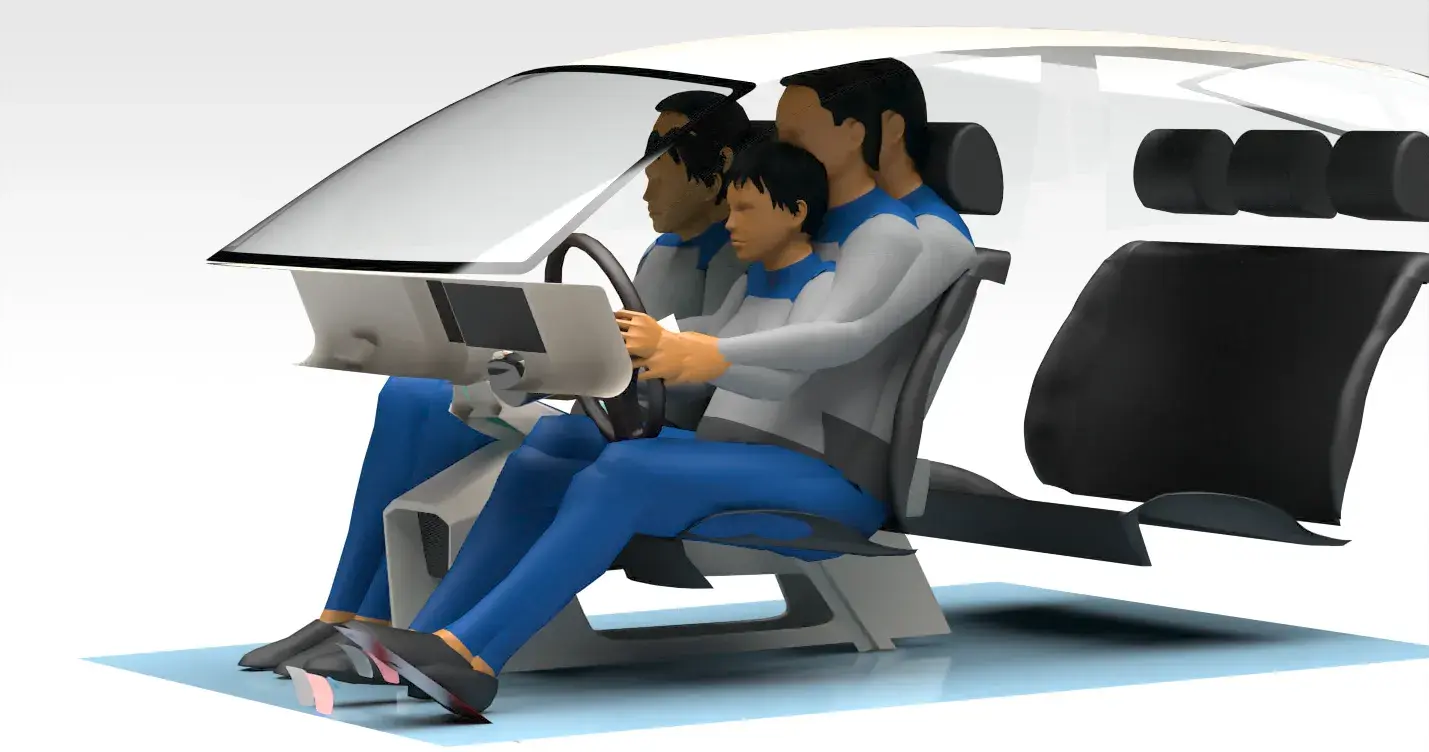
What makes RAMSIS unique?
- Developed under the guidance of the German automotive industry
- Digital 3D CAD human model with various anthropometrical and posture models
- Integration of valid scientific model data
- Region- and gender-specific body models to simulate real-world variability
- A scientifically validated database of almost 200,000 real body scans across global populations.
- Realistic simulation of human behavior in interiors based on observations of human behavior patterns in real environments
- Consideration of anatomical flexibility limits
- Wide range of analysis functions regarding ergonomic criteria (comfort, view, reachability, clearance, operation forces)
- Kinematical realistic motion simulation, not just static manikins
- Worldwide most comprehensive commercial ergonomic tool in vehicle design
With RAMSIS, automakers can answer the question: “Does this interior work for everyone?” before a single physical prototype is built.
Designing for Gender Diversity
Historically, the automotive industry has over-relied on male-centered standards when defining seating geometry, reach distances, and visibility lines. But differences between male and female drivers are not just statistical. They are biomechanical.
Ramsis Accounts For
Designing for Age and Accessibility
The global shift toward older drivers introduces new ergonomic challenges. These include diminished joint mobility, decreased muscle strength, and reduced visual acuity. These changes affect ingress and egress, seat adjustment, display readability, and control reach.
RAMSIS includes age-variant human models that realistically simulate:
- Limited head and neck rotation
- Reduced shoulder flexibility
- Larger anthropometric clearance requirements
- Different line-of-sight angles due to posture
This allows designers to assess how elderly occupants experience the cabin, from stepping into the vehicle to adjusting seat height and accessing digital interfaces.
Inclusive design for aging drivers is not just about comfort. It impacts safety, independence, and brand loyalty. RAMSIS gives engineers the foresight to design with dignity in mind.

Designing for Regional Populations
Vehicle platforms that span continents must satisfy widely varying user populations. For example:
- North American drivers are, on average, more corpulent and heavier
- East Asian populations tend to have larger torso length and smaller leg length
- European customers are taller and getting more corpulent
RAMSIS enables region-specific simulation using population datasets for countries like the United States, Germany, China, Japan, and Korea.
This regional insight helps avoid costly design missteps such as touchscreen placements that are out of reach in one market or overly reclined seating that fails ingress requirements in another. RAMSIS enables data-driven decision-making tailored to local needs.
Interested in More Content Like This?
Subscribe to the Humanetics Pulse newsletter to learn more about Humanetics Products, News, and Industry Updates.
Applications Across the Vehicle Lifecycle
RAMSIS is not limited to one phase of design. It supports the entire development lifecycle:
1. Concept and Architecture
Early in the development process, RAMSIS helps define cabin dimensions, occupant packaging, and spatial envelopes for diverse future user groups during the lifecycle. Designers can quickly test spatial feasibility across percentiles, avoiding late-stage constraints.
2. Digital Prototyping
RAMSIS integrates seamlessly with CAD environments, including CATIA, Siemens NX, and others. This allows real-time simulation of human movement, posture, and interaction with digital vehicle models.
3. HMI and UX Design
With increasing complexity in infotainment and ADAS systems, Human-Machine Interface design must work for a range of users. RAMSIS supports:
- Analysis of the gaze change time between the driving view and the instruments
- Control reachability for varying arm lengths
- Display readability based on posture and head tilt
4. Safety and Visibility
Designers can evaluate line-of-sight, blind spot zones, mirror coverage, belt routing fitting, and airbag coverage using realistic occupant simulations across a representative population, not just a 50th percentile male.
The Bottom Line: More Inclusive Vehicles, Faster
Designing for diversity used to mean building more physical prototypes, running more user clinics, and accepting longer lead times. Not anymore.
With RAMSIS, Humanetics enables automakers to:
- Simulate real users with precision and variability
- Identify ergonomic risks before the design is frozen
- Optimize for global compliance and regional preferences
- Accelerate design cycles while increasing user satisfaction
RAMSIS transforms inclusivity from a late-stage consideration into a proactive design advantage. The result is not just better vehicles, but better experiences for everyone.
Looking Ahead: From Ergonomics to Experience
Speak to an Expert
Fill out the below form and one of our experts will contact you.

Dr. Hans-Joachim Wirsching
Dr. Hans-Joachim Wirsching is a Senior Product and Project Manager for Ergonomics at Humanetics, with over 25 years of experience in developing digital ergonomic simulation applications. He specializes in integrating methods and models into the ergonomic design tool and digital human model RAMSIS, combining scientific knowledge with the practical requirements of vehicle engineers. Hans-Joachim is also an active member of the digital human modeling community, contributing conference papers and presentations that address new developments and applications of RAMSIS.
